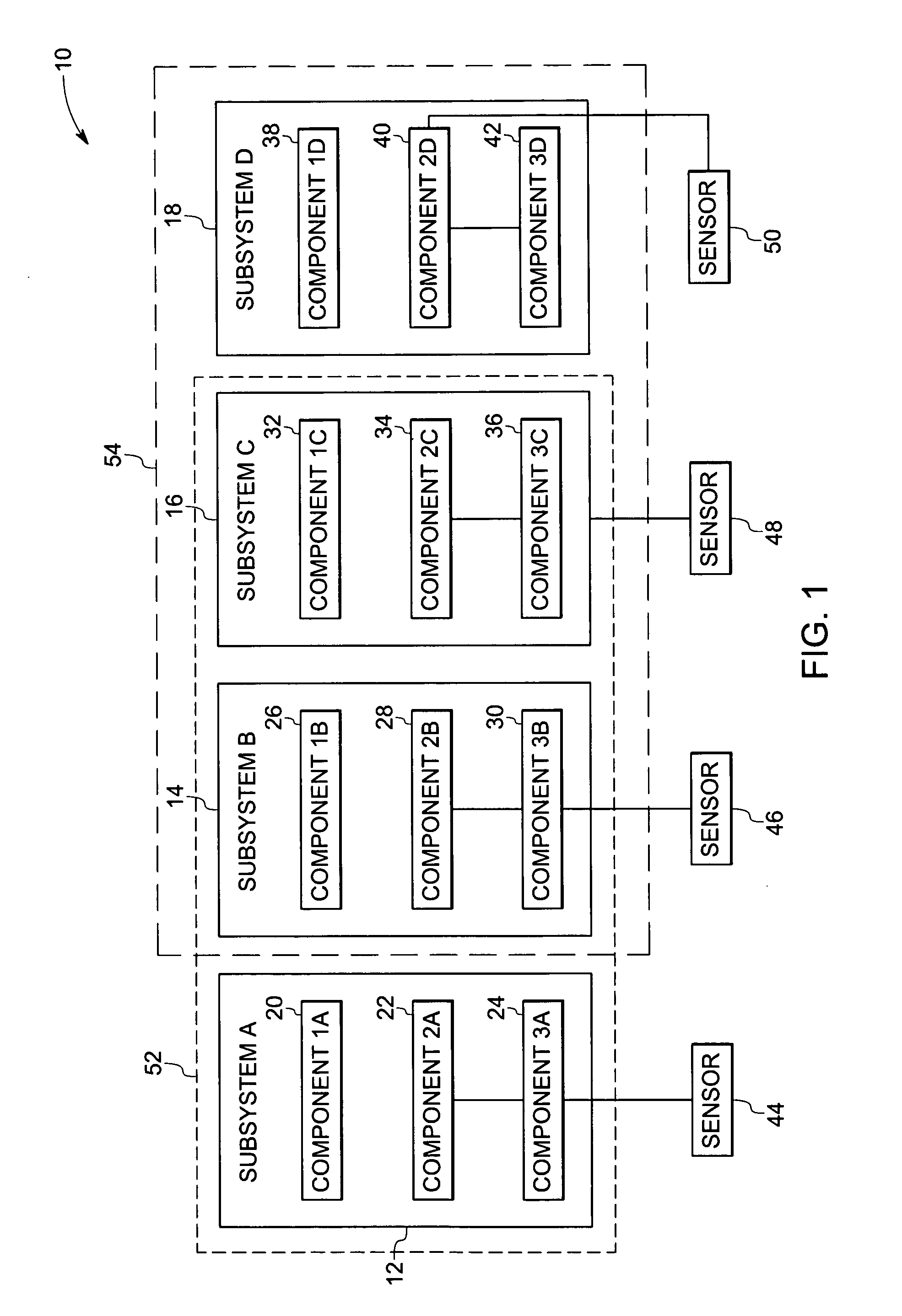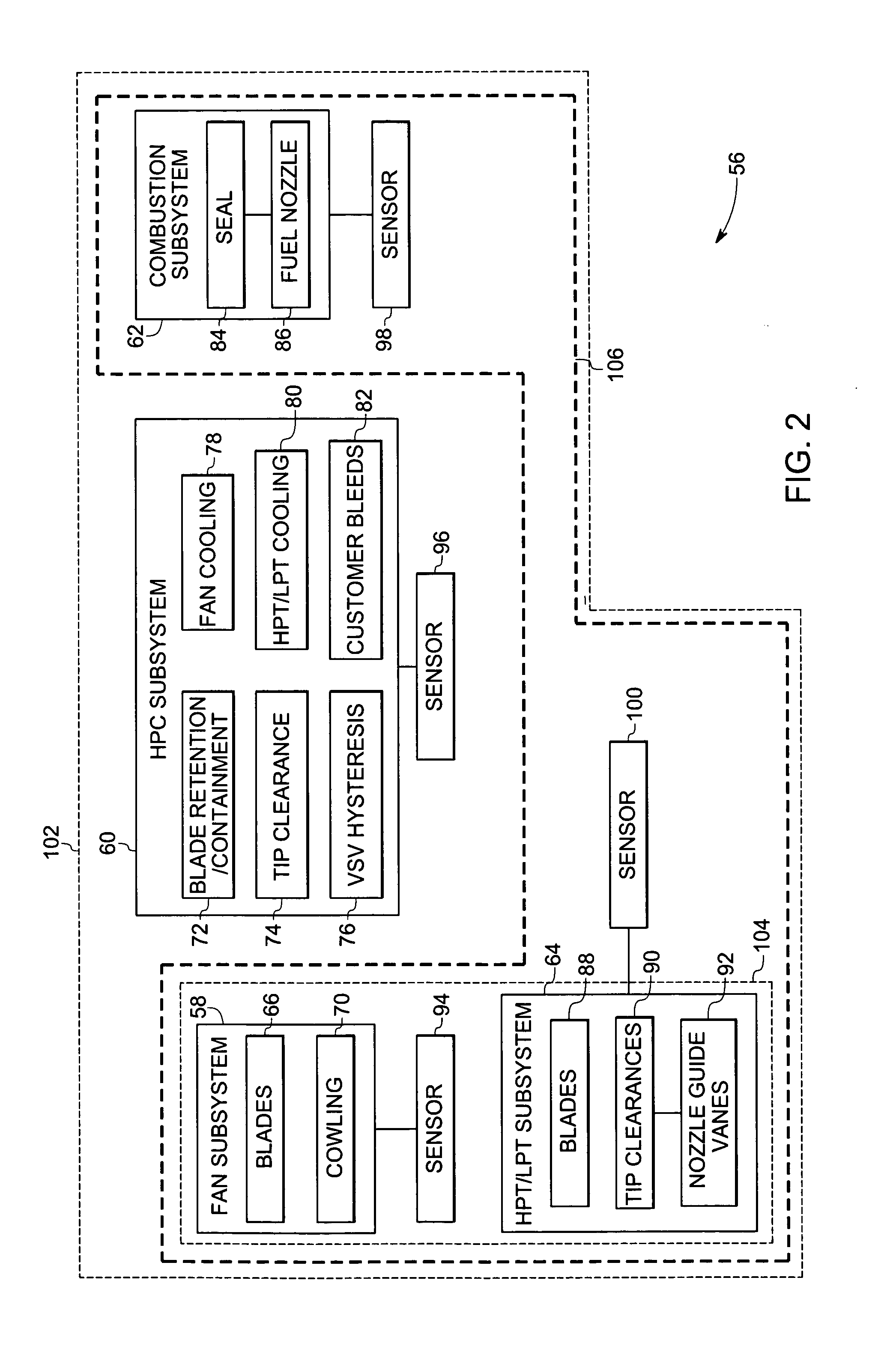Method and system for hierarchical fault classification and diagnosis in large systems
a hierarchical fault and classification technology, applied in the field of large system fault diagnosis and classification, can solve the problems of not providing an optimal evaluation of the performance of such large systems, subcomponent hierarchy interactions or subsystem hierarchy interactions within a system cannot be easily captured, and above decision fusion techniques lack the capability to integrate overlapped faults that are often observed from independently developed diagnostic models
- Summary
- Abstract
- Description
- Claims
- Application Information
AI Technical Summary
Benefits of technology
Problems solved by technology
Method used
Image
Examples
Embodiment Construction
[0015]FIG. 1 is an exemplary illustration of a large system 10 comprising one or more subsystems and components. As shown in FIG. 1, system 10 includes one or more subsystems represented generally by the reference numerals 12, 14, 16 and 18. Each of the subsystems 12, 14, 16 and 18 may further include one or more components represented generally by the reference numerals 20, 22, 24, 26, 28, 30, 32, 34, 36, 38, 40 and 42 as shown in FIG. 1.
[0016] Further, the subsystems and components of system 10 may be organized to function in an interrelated and coordinated manner. For example, as shown in FIG. 1, an exemplary grouping between subsystems A, B and C within system 10 is illustrated by the reference numeral 52. Similarly reference numeral 54 is an illustration of another exemplary grouping between subsystems B, C and D of system 10. One of ordinary skill in the art will recognize that the exemplary groupings depicted in FIG. 1 are for illustrative purposes only and are not meant to ...
PUM
 Login to View More
Login to View More Abstract
Description
Claims
Application Information
 Login to View More
Login to View More - R&D
- Intellectual Property
- Life Sciences
- Materials
- Tech Scout
- Unparalleled Data Quality
- Higher Quality Content
- 60% Fewer Hallucinations
Browse by: Latest US Patents, China's latest patents, Technical Efficacy Thesaurus, Application Domain, Technology Topic, Popular Technical Reports.
© 2025 PatSnap. All rights reserved.Legal|Privacy policy|Modern Slavery Act Transparency Statement|Sitemap|About US| Contact US: help@patsnap.com



